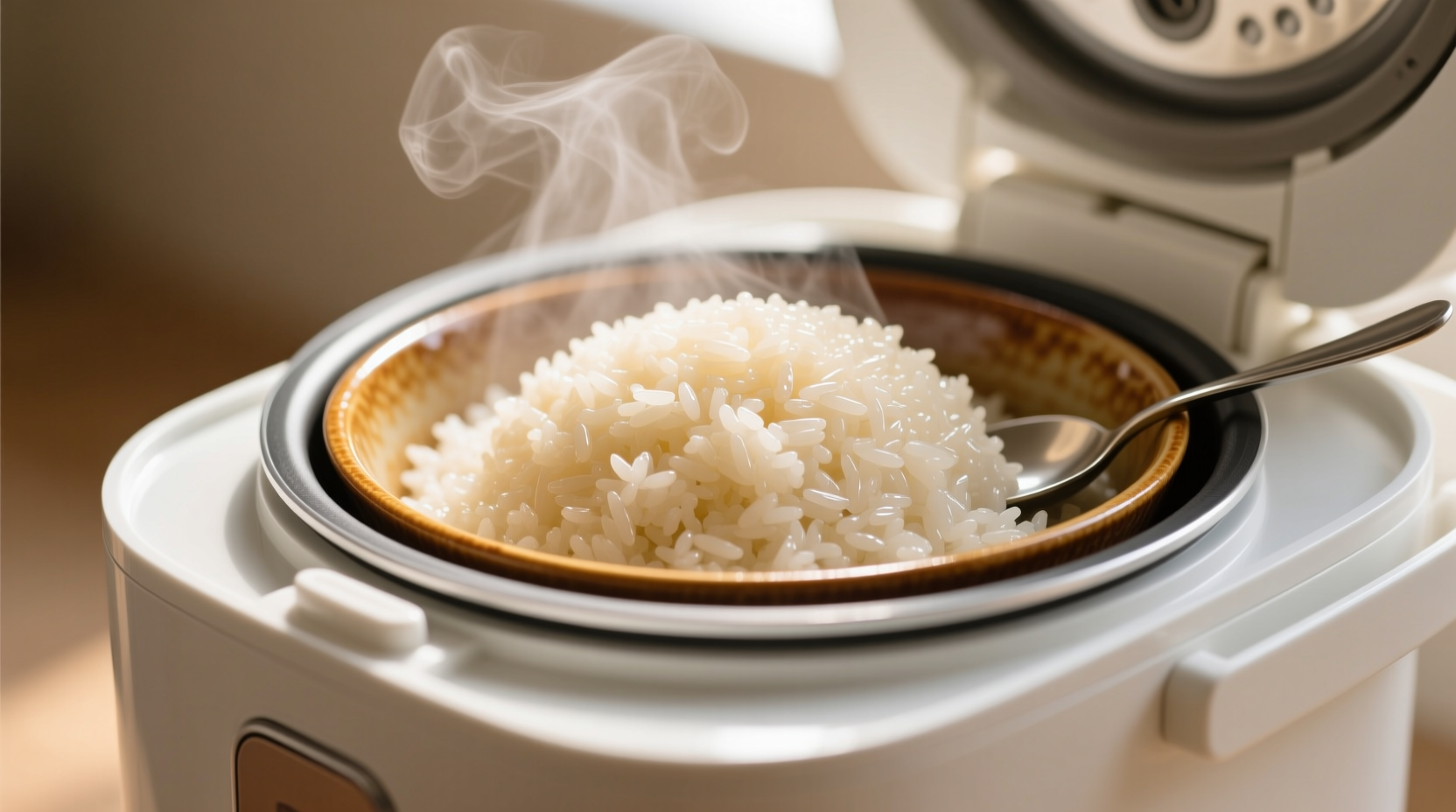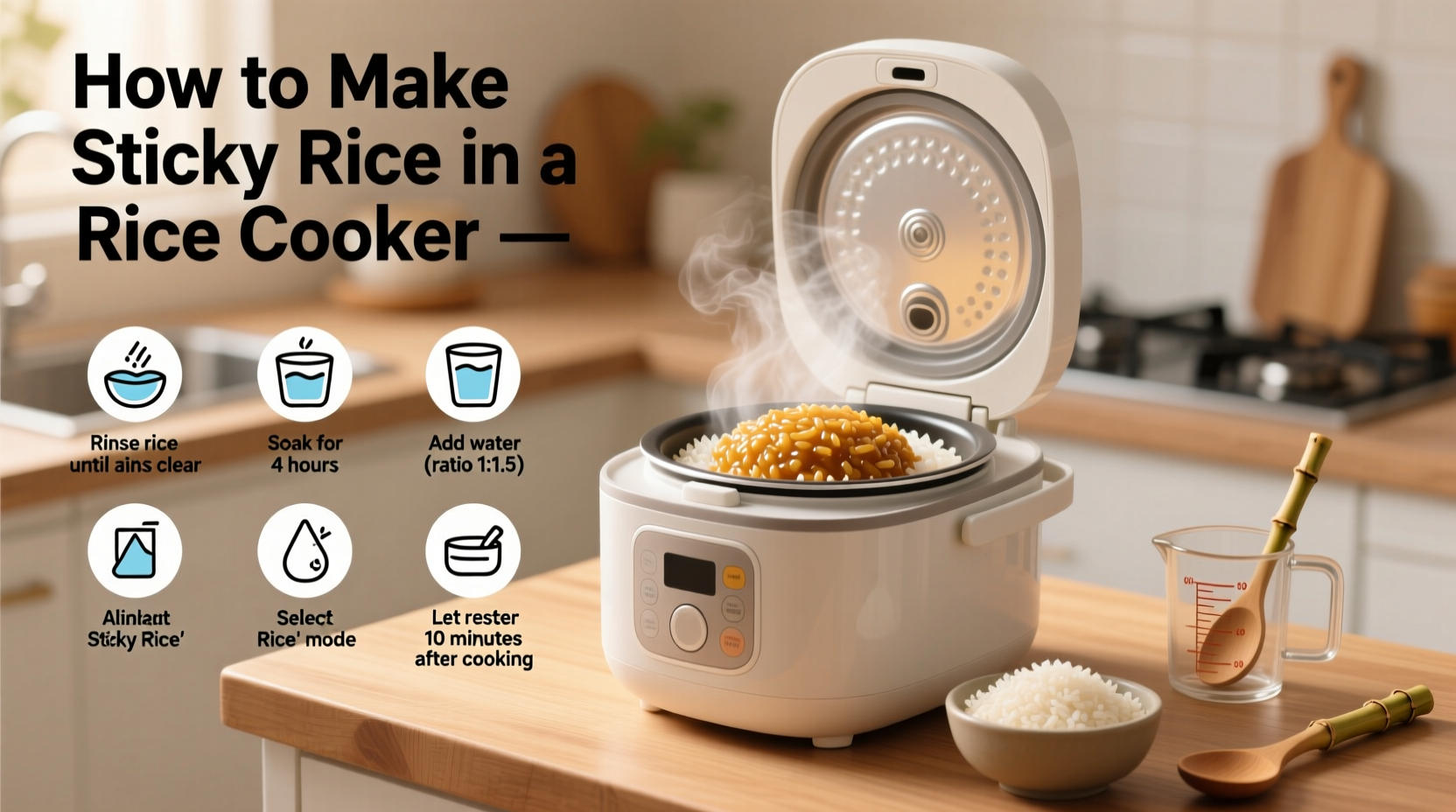Perfect sticky rice in a rice cooker requires just 3 cups of glutinous rice, 2¾ cups of water, a 30-minute soak, and your rice cooker's standard setting. This foolproof method yields consistently tender, chewy rice without traditional bamboo steamers. The critical steps are proper washing to remove excess starch and precise water measurement—deviate by even ¼ cup and texture suffers.
The Science Behind Perfect Sticky Rice
Sticky rice (also called glutinous or sweet rice) gets its signature chew from amylopectin starch, not gluten. Unlike regular rice, it requires complete soaking to hydrate kernels before cooking. Your rice cooker's consistent low heat prevents the rapid temperature shifts that cause uneven texture in stovetop methods.
| Preparation Method | Texture Result | Time Required |
|---|---|---|
| Rice cooker (with soak) | Uniformly tender, slightly chewy | 45 minutes active + 30 min soak |
| Traditional bamboo steamer | Delicate outer layer, firmer core | 2+ hours |
| Rice cooker (no soak) | Gummy exterior, hard center | 30 minutes |
Why Your Previous Attempts Failed
Most home cooks make two critical errors: skipping the soak and using incorrect water ratios. Food science research from the University of California's Department of Food Science confirms that glutinous rice requires full hydration before cooking to activate its unique starch structure (UC Davis Grain Lab, 2023). The rice cooker's "keep warm" function also creates problems—leaving rice sitting too long causes over-gelatinization.
Step-by-Step Cooking Process
- Wash meticulously: Place 3 cups rice in colander. Rinse under cold water while gently rubbing grains until water runs clear (about 5 rinses). This removes surface starch that causes gumminess.
- Soak properly: Transfer to rice cooker pot with 2¾ cups water. Soak 30 minutes (set timer—no exceptions). For harder water regions, add 2 tbsp filtered water.
- Cook correctly: Select standard white rice setting. Do NOT use quick-cook or brown rice settings. The 18-22 minute cooking cycle allows gradual starch transformation.
- Rest crucially: After cooking completes, let rice sit undisturbed for 15 minutes with lid closed. This equalizes moisture distribution.

Troubleshooting Guide
If rice is too wet: Drain excess water immediately after cooking cycle ends. Reduce next batch water by 2 tbsp. Humidity above 60% requires 3-4 tbsp less water (USDA Food Safety Guidelines).
If rice is too dry: Add 2-3 tbsp water before resting period. Older rice (over 6 months storage) absorbs less moisture—increase water by 3 tbsp for every 6 months past milling date.
If not sticky enough: You likely used regular short-grain rice. True glutinous rice (Oryza sativa var. glutinosa) has opaque white kernels. Check packaging for "mochi rice" or "sweet rice" labeling.
Pro Storage Techniques
Cool cooked rice within 1 hour to prevent bacterial growth. Store in airtight container with damp cloth pressed against surface. Refrigerate up to 4 days or freeze in 1-cup portions for 2 months. Reheat by steaming—microwaving destroys texture. For authentic Southeast Asian applications like mango sticky rice, add 1½ tbsp coconut cream and 1 tsp salt during final 5 minutes of cooking.
Frequently Asked Questions
Can I use regular rice instead of glutinous rice?
No. Regular rice lacks the high amylopectin content (98% vs 70-80% in regular rice) needed for sticky texture. Substituting creates mushy, unappetizing results. Look for "sweet rice" or "mochi rice" in Asian markets.
Why must I soak glutinous rice before cooking?
Soaking fully hydrates the dense starch structure. Skipping this causes uneven cooking—gummy exterior with hard centers. The 30-minute soak allows water to penetrate kernels before heat activates starch gelatinization.
How do I prevent rice from sticking to the pot?
Lightly coat the rice cooker pot with toasted sesame oil before adding rice and water. Avoid non-stick sprays which can leave chemical residues. The oil creates a barrier without affecting flavor.











 浙公网安备
33010002000092号
浙公网安备
33010002000092号 浙B2-20120091-4
浙B2-20120091-4